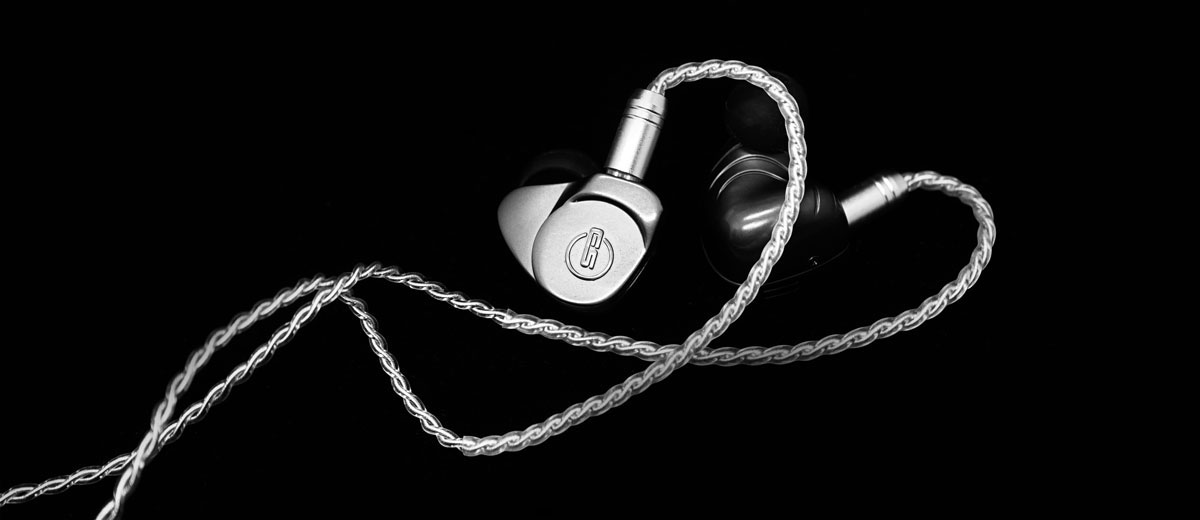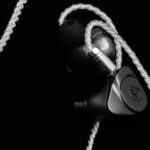The Earsonics CORSA is the company’s latest triple balanced armature driver universal IEM featuring a 3D full acrylic structure. It is priced at €399.
Disclaimer: The Earsonics CORSA sent to us is a sample in exchange for our honest opinion. We thank the team at Earsonics for giving us this opportunity.
To read more about Earsonics products reviewed on Headfonics click here.
Note, this review follows our new scoring guidelines for 2021 which you can read up on here.
Earsonics’s design has been evolving all the way from the plastic molded SM3 to the handcrafted S-EM resin series, now we have the versatile, heavily machined metallic series that blends together firm, beautiful curves and enhanced performance.
Following the STARK and BLADE, Earsonics has now launched the new entry-level CORSA with a triple BA, 3-way architecture. The 100% made in France manufacturer has impressed us with its musical, powerful hybrids, and considering how much we liked the older ES-3 we have some good expectations for their latest triple BA design.
The very heavily machined CORSA has a similar design philosophy to the STARK with a full-metallic chassis. This is a premium overhaul on design aesthetics from the SM3 that started the legacy.
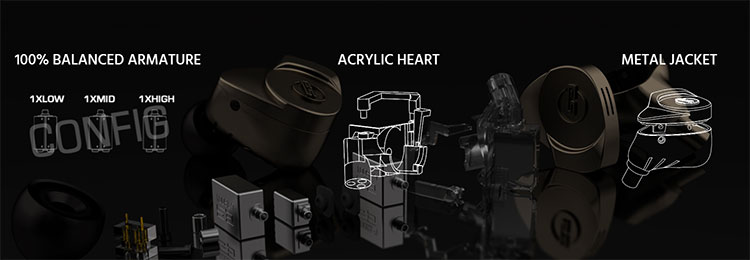
Tech Inside
The CORSA metallic chassis is shaped from zinc and magnesium alloy, specifically chosen and anodized to withstand oxidation and shock that helps reduce distortion from mechanical vibration as well as magnetizing effects. The housing doubles as an acoustical chamber and a mechanical filter, reducing the use of electronic dampers that impairs sonic performance.
Earsonics shows off machining precision with an extruded logo finely embodied on the faceplate. Internally, an acrylic 3D skeleton structure holds together the 3-way driver setup.
The French manufacturer explains that this is a measure to further enhance phase control, by optimizing the positioning of different drivers for perfect phase alignment and helps to fine-tune the sound by making use of the material’s acoustical characteristics.
EVS & FUSION
Earsonics implements their own EVS (ergonomic versatile shell) and FUSION technologies in the crossover impedance corrector to align phases in the driver’s output, aiming at optimizing musicality.
This refers to the housing as an acoustic chamber for tuning and the electronic circuit designs that minimize electrical phase problems which we mentioned above.
Configuration
The precise configuration of the CORSA is a single BA for the lows, one for the highs, and the final BA for the mids. It has a sensitivity rating of 31Ω and 119dB SPL so it should be easy enough to drive, (see Sound Impressions and Synergy section below).
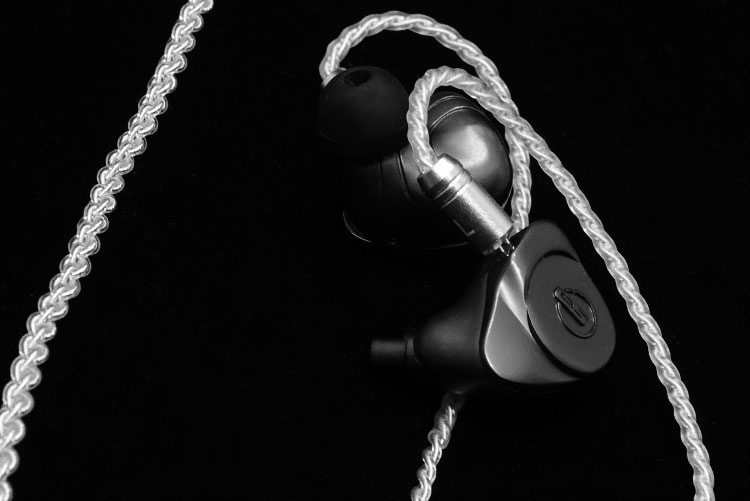
Design
The CORSA design is pretty much the same shape as the STARK we reviewed earlier but the color on it is different. The new tanned color adds a bit more warmth to the design, a color I like on my coffee brewing gears. The design looks even smoother and more masculine with this darker theme compared to the cooler colors on the STARK.
The design language is consistent with the STARK and you can see how the brand gives extra care to small details like the packaging and accessories, which compliments the IEM aesthetics and are practical enough to be carried around.
Stock Cable
The new “4C HI-RES” cable that comes with the flagship STARK earphones are also used as the stock cable for the CORSA. This is a 4-core wire braided into forming a very soft or pliant cable with over-molded parts on the 3.5mm end.
The 3.5mm end has a 90-degrees bend and you will find no ear-hooks on the other end, which look quite neat and are firmly molded. The design works great for those who wear glasses but may get tangled sometimes.
Some Earsonics users may remember the experience when purchasing an upgrade cable only to find out that polarity is inverted. You may need a converter for example the qdc 2-pin converters or you could just flip the +/- pins around when connecting the cable.
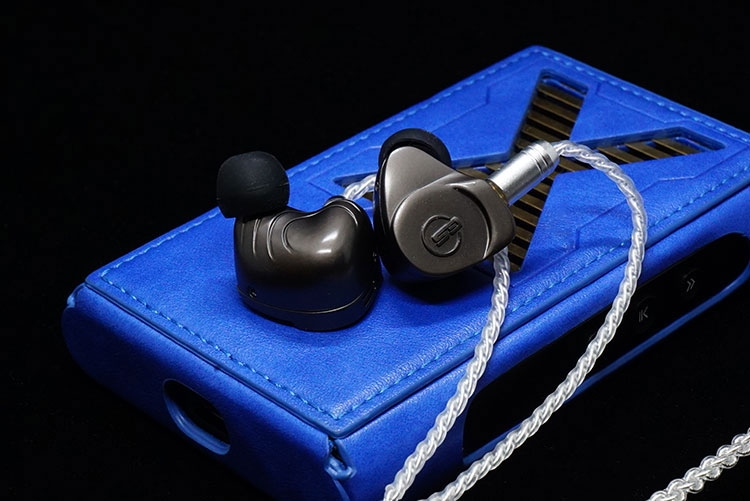
Comfort & Isolation
The CORSA is ergonomically designed just like the STARK, and the fit is just right and it sits on my ears without any pressure stressing them. The size of the IEM is not as big as it looks and everyone around gets a good fit easily.
The nozzle extends fairly deep for a secure fit and there is no discomfort having it on for a few hours, with the bass sound more expanded with the shallower nozzle which is a plus.
You may be worried about the weight, so did I, but it actually doesn’t cause any pain or stress as the weight spreads quite evenly on the outer ear. Isolation on the other hand is satisfactory and could block out quite some noise around, and you could further passive noise blocking by using foams.

Packaging & Accessories
The packaging with Earsonics is always professional. With a similar but more petite packaging design to the STARK’s drawer design box, you will get a matching set of accessories and information written on top.
The selections of tips carry cases and the STARK unit are displayed neatly inside. There are some Comply tips inside too which will give you a different bass response when you put it on.
- 4 Comply tips (various sizes)
- 8 silicon tips (various sizes)
- Cleaning tool
- Carrying box
- User manual

CORSA Sound Impressions
Summary
Bearing the name that carries the meaning “racing” or “journey”, it seems that Earsonics is hinting us they are doing a more vivid, energetic tuning this time.
With 3BA inside that does not include any dynamic drivers like its bigger brother, the configuration aims at accuracy and precision instead of meaty rich presentation. This could also match better with weaker sources that may not have enough current to give dynamic drivers a good push.
From the official site, the signature of the CORSA is clean and emphasizes slightly more treble than the rest of the FR. There is a small recession in the lower mids of the STARK to further enhance vocal clarity. The level of detail is also very highly rated by the manufacturer themselves and we will check if this is true on different devices.
I am giving the CORSA some good run-in and swap the same cable on the STARK to test it, by the time I am writing the impressions I have more than 100 hours playback time with various burn-in tracks.
Bass
With BAs handling the bass, there is more agility than outright power. Thus the low-end is erring more to the controlled and responsive side of things than sounding full and weighty.
This is a tight and punchy bass that is cleanly separated from the mids offering above-average separation and layering. The sub-bass is quite limited but not lacking, and it reveals a good extension in recordings such as “Magic” by Coldplay and or some classical organ ensembles.
Even when powered by a weaker source the CORSA can deliver a decent punchy tone. However, pairing it on a stronger source with a good dynamic range helps to add more control and strengthen the performance.
Midrange
Without bass performance that remains tight and does not bleed there is more room for the midrange and vocal line to be revealed.
Although the official Earsonics FR chart has the mid-lows slightly weaker than the other frequencies, the midrange actually doesn’t sound recessed at all and is nicely articulated without sounding boxy. This helps acoustic instruments and string pickings to sound full and powerful.
Vocal tone
The very transparent vocal has a small hint of warmth, swiftly presented and imaged more upfront when compared to the STARK. It is moderately textured and sounds quite unaltered.
The tuning works pretty well with any music I throw into it especially with cleaner vocalists as well as some string works, without any strong emphasis on certain frequencies but small boosts to lift up clarity and put in more space for the mix.
I find it works well with Jazz, playing B.B.King’s tunes the guitar stands out really well and the vocal has great clarity. There are also some beautiful overtones that accompany the vocals and it sounds sweet and transparent with electronic music or anything with faster bass attacks.
In my own experience with French music (from older folk songs and contemporary) such as the covers done by Pomplamoose, which is often lively and rich in acoustic instruments, the CORSA would be a good pairing.
It does a wonderful job capturing the virtuoso’s singing skills and handling the vocal frequencies with good authority, nicely spaced out without sounding hollow, and articulates swiftly to the upper mids. The backing instruments also sound quite 3D and the acoustic guitar doesn’t sound flat.
Treble
The mid-treble range is well-textured but not dampened so it sounds a tad brighter than on the STARK possibly because of the more shy bass. There is good clarity and air in the slightly aggressive treble which is rounded off right before it starts to sound harsh.
Overall, the CORSA one of the cleaner sounding triple BA treble performances I have heard but at the same time never strays into overly harsh or edgy territory.
Staging
With the articulation from the bass to the treble being swift and naturally executed, nothing sounds missing or overpowered. This makes the staging sound realistic but instruments are strong in the midrange frequencies being more upfront and pronounced.
The crossover is done well such that the CORSA sounds coherent and precise in positioning instruments. Nothing is exaggerated and stretched out, and it is just right for tracks that focus on just one or two instruments or vocal singers.
Feeding more power to the CORSA with the Hifiman HM1000 Gold version or the Chord Hugo 2 you can hear the staging being expanded, instruments more spaced out and there is bigger, more dynamic sound.
On the HiBy R6 2020, the staging is quite wide and there is more mid-bass energy, but it sounds slightly too dry to me. When you amp the CORSA you can feel more potential for it to sound more expanded.
Higher gain will also help the CORSA to sound more open but depending on your DAP it may lean more towards the treble and may sound more aggressive as a result.
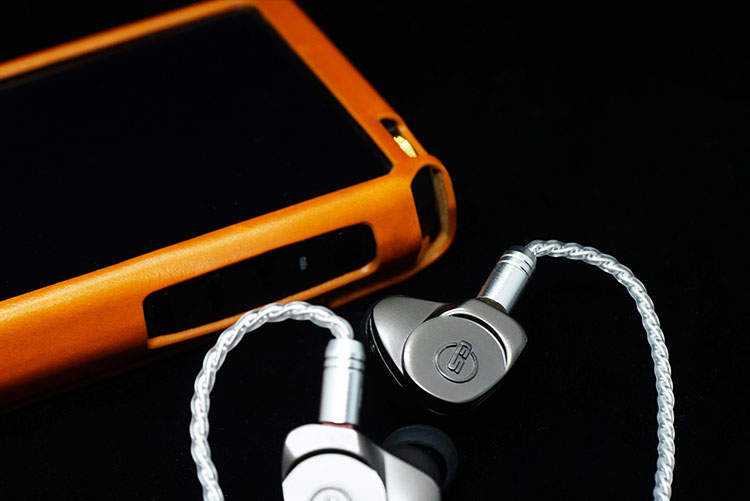
Synergy
As usual, I am testing with my iPhone first and the CORSA has some good resemblance to its bigger brothers and the “ancestor” SM3, which has a smooth and textured signature while maintaining good fullness in the bass.
At 31ohmΩ, 119dB/mW it is responsive to higher decoding power and amping, and with most pairings, it sounds coherent and natural in tone. The CORSA is tuned quite textured and even on phones it doesn’t sound loosen up, nor lean in the lows or the treble side, which makes it quite an easy pairing with gears around.
Select Comparisons
Since the performance of the CORSA is on the clean and resolving side I am finding two IEMs with similar traits to be put against it. The HiBy Crystal 6 and Astrotec Volans are both nicely built items released not long ago and they are put on various machines such as the HiBy R6 2020, Cowon D3, FiiO Q5S to compare how they respond to power and different tuning.
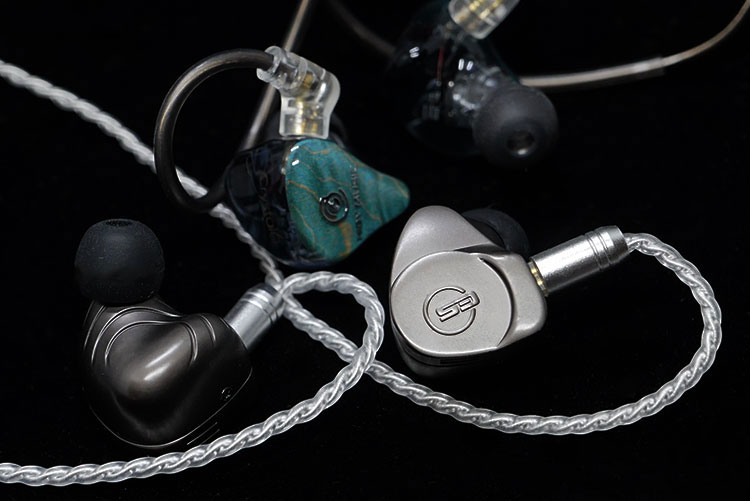
Hiby Crystal 6
$459
Technical
The two IEMs are very different in driver counts and sensitivity; the performance comes closer when there is more power in the output. Sometimes the simpler the structure, the more accurate the presentation is.
With a good source, there is a lot of potential for the CORSA to scale and respond. As such, I always prefer simpler configurations with a more precise crossovers network inside that enable good accuracy and better tonal balances. The CORSA does well in this respect, responding to better decoding power.
For those who seek better clarity and crispness on a phone setup, you may try the Crystal 6 and for those with stronger sources, the robust CORSA will be more rewarding.
Performance
With 6 drivers inside the HiBy Crystal 6 is a very clean sounding IEM rated at 14ohm, 107dB/mW. This makes it easy to drive and sound quite full even on the 3.5mm output of the Shanling M3X or phone outputs. There is a lot of vivid detail and a swift mid-treble experience compared to which the CORSA may struggle to sound full under lower power.
In contrast, the CORSA can be fed more current to boost its dynamics, and definition in the output. It seems like there is more potential to boost the CORSA with a stronger source and amp stage.
Comparing both on the R6 2020, the Crystal 6 is clearly brighter and cleaner with more intended alteration to the upper vocal frequencies. That matches the name Crystal 6 and you can feel how the tuning tries to extract treble details from the track.
The Crystal 6 works excellently with devices that are lacking in resolution or not strong in output power, such as phones, tablets, and entry-level DAPs.
The CORSA is comparably more balanced, more controlled in the upper register. It has more fullness in the mid-bass that gives thicker voices more power and the kicks more density. With pop streaming the texture is smoother, adding more definition to the mid-bass, which the CORSA is not lacking.
Putting both IEMs on stronger sources you may notice the Crystal 6 better in extension and the CORSA is more balanced, gently rolled off in both the treble and lows. That makes it the more forgiving monitor with most music and the more natural sounding of the two IEMs.
Astrotec Volans
$329
Technical
The Volans has an unusual metallic green metallic jacket that houses a 10.5mm Tesla magnetic brass dynamic driver. I also like the cables and huge plastic case that comes with the Volans, also its slimmer profile with the gold accent on the nozzle.
The CORSA’s more masculine design is also lovely, and the color theme is quite cool. There is a lot of joy to see the effort that goes into making these metallic IEMs more appealing and that does add good value to the whole experience.
At 32ohm, 110dB/mW it is comparatively quite a bit less sensitive to the CORSA, which outputs a higher sound pressure level when switching between them. With a dynamic driver inside the Volans is still quite sensitive to power but a stronger current will definitely breathe more life and dynamics into the sound it replays.
Performance
On the FiiO Q5S, both the Volans and the CORSA are nicely driven, the bass punch is tight, and attacks with good power. The Volans is very smoothly articulated especially in the mid-treble range while the CORSA has a stronger stereo image and separation in the mids.
The Volans has a meatier low-end especially when feeding it stronger power. It is also able to scale up its definition and airiness when throwing in a resolving DAC source like the Chord HUGO 2.
The CORSA is rather responsive in reflecting the source’s quality while being more consistent in sound signature. It is more balanced with some welcoming sparkle in the mid-treble range which gives it good flexibility paring with different sources and music.
If you are looking for bigger bass and an easy-going signature the Volans works great, while the CORSA offers more precision in the mids as well as a more defined and separated vocal image when compared to using the same sources.

Our Verdict
Three has been a magical number with some of Earsonics best performing IEMS, a theme they have polished generation after generation.
This time around the CORSA offers the most robust build quality and precision compared to its predecessors and a theme consistent with their recent STARK launch.
It will not suit bassheads, however. The sound presentation is more to the clean and articulate side though it is punchy enough to be a fairly flexible monitor for all but the most bass-heavy of genres. Instead, the CORSA is a coherent, refined, and transparent sounding IEM with solid build quality 100% hand-made in France.
Earsonics CORSA Specifications
- Sensibility: 119 dB/mW
- Fréquence response: 10 Hz -20 kHz
- DCR: 31 ohms
- Drivers: 3 BA drivers with 3 way impédance corrector crossover



